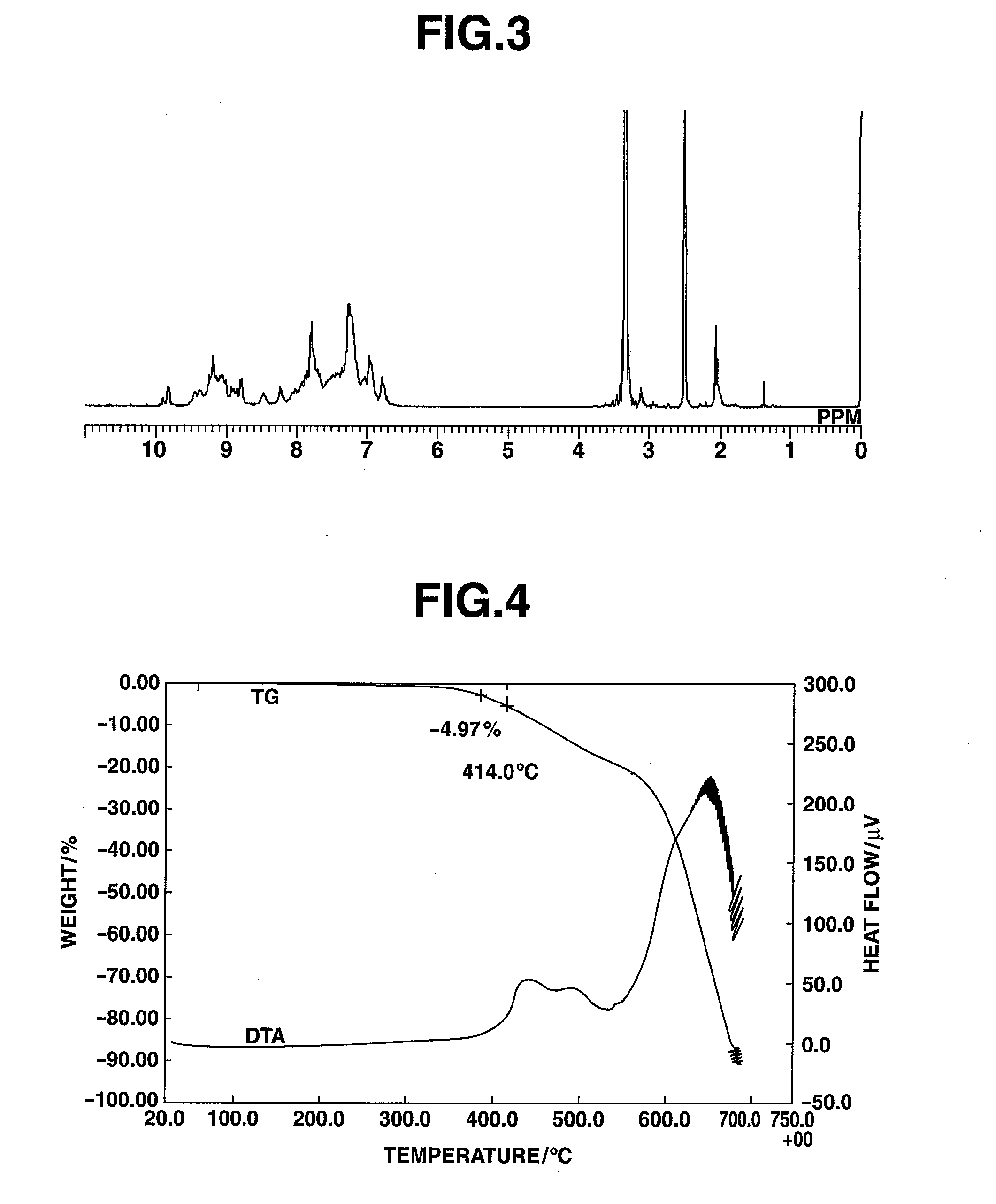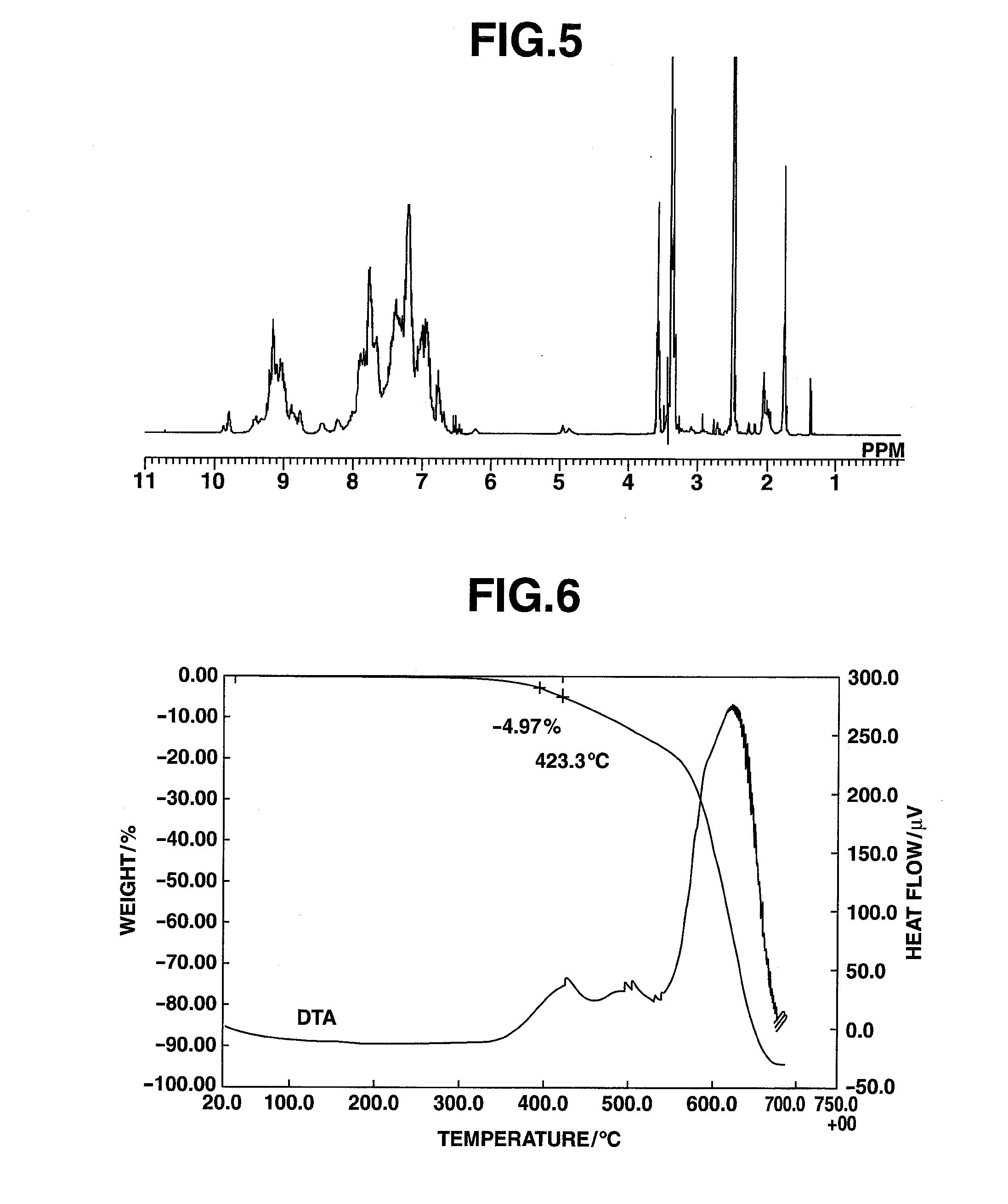Triazine ring-containing polymer and film-forming composition containing same
a technology of triazine ring and film-forming composition, which is applied in the direction of instruments, optical elements, polyamide coatings, etc., can solve the problems of low transparency of materials of this type, unsuitable for baking in open air at 300° c, and low heat resistance temperatures, etc., to achieve high transparency, high heat resistance, and high refractive index
- Summary
- Abstract
- Description
- Claims
- Application Information
AI Technical Summary
Benefits of technology
Problems solved by technology
Method used
Image
Examples
example 1
[0237]Synthesis of Polymeric Compound [4]
[0238]Under a nitrogen atmosphere, 185 g of dimethylacetamide (DMAc) was added to a 500 mL four-neck flask and cooled to −10° C. in an acetone bath to which dry ice was added, following which 56.04 g (0.3 mol) of 2,4,6-trichloro-1,3,5-triazine [1] (Evonik Degussa) was added and dissolved therein. Next, a solution of 39.70 g (0.37 mol) of m-phenylenediamine [2], 4.41 g (0.04 mol) of bisaminophenylfluorene [3] and 9.61 g (0.10 mol) of aniline dissolved in 125 g of DMAc was added dropwise. Following dropwise addition, the flask contents were stirred for 30 minutes and the resulting reaction solution was added dropwise using a pipette pump to a reactor consisting of a 1,000 mL four-neck flask to which had already been added 252 g of DMAc and which had been heated beforehand to 85° C. on an oil bath. After one hour, 74.32 g (0.80 mol) of aniline was added dropwise, and the flask contents were stirred for 1 hour.
[0239]The system was allowed to cool...
example 2
[0241]5% Weight Loss Measurement for HB-TDFA03
[0242]An amount of 5.73 mg of the HB-TDFA03 obtained in Example 1 was added to a platinum pan, and measurement with a TG-DTA was carried out at a temperature ramp-up rate of 15° C. / min. The results are shown in FIG. 2. The 5% weight loss temperature was 408° C. The glass transition temperature was measured by DSC, whereupon a transition point was observed at 227° C.
example 3
[0243]Measurement of Refractive Index
[0244]The HB-TDFA03 obtained in Example 1 (0.1 g) was dissolved in 0.9 g of cyclohexanone, giving a clear, light yellow-colored solution. Using a spin coater, the resulting polymer varnish was spin-coated onto a glass substrate for 5 seconds at 200 rpm and for 30 seconds at 2,000 rpm, following which the solvent was removed by 1 minute of heating at 100° C. and 5 minutes of heating at 300° C., thereby giving a film. The refractive index of the resulting film was measured, whereupon the refractive index at 550 nm was 1.772.
PUM
| Property | Measurement | Unit |
|---|---|---|
| refractive index | aaaaa | aaaaa |
| temperature | aaaaa | aaaaa |
| temperature | aaaaa | aaaaa |
Abstract
Description
Claims
Application Information
 Login to View More
Login to View More - R&D
- Intellectual Property
- Life Sciences
- Materials
- Tech Scout
- Unparalleled Data Quality
- Higher Quality Content
- 60% Fewer Hallucinations
Browse by: Latest US Patents, China's latest patents, Technical Efficacy Thesaurus, Application Domain, Technology Topic, Popular Technical Reports.
© 2025 PatSnap. All rights reserved.Legal|Privacy policy|Modern Slavery Act Transparency Statement|Sitemap|About US| Contact US: help@patsnap.com



